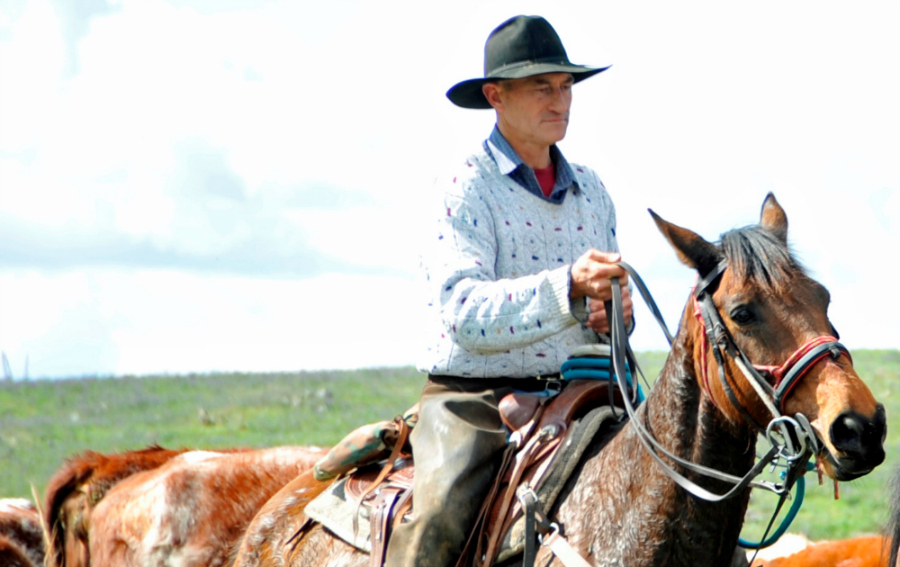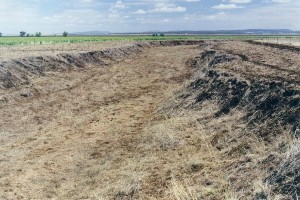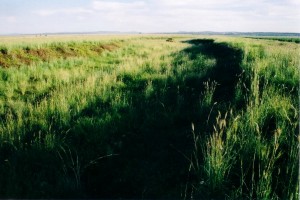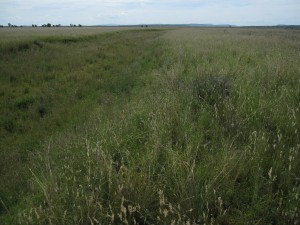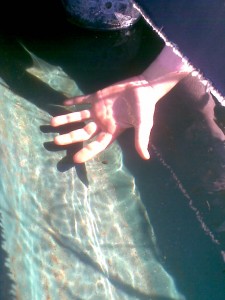For those of you practicing planned, rotational grazing, can you remember the AMAZING change in your pasture when you first moved from set stocking to a planned/rotational grazing?
Phenomenal wasn’t it? I bet nearly any of the advances since then have not been as dramatic as what that initial change was?
For those of you not practicing planned grazing, it is these fantastic outcomes that keep the rest of us in this regenerative and low or no input system.
Hold these thoughts….
Dick Richardson is an educator and grazier at Boorowa in southern NSW, Australia. He is originally South African, where he practiced HM principles and he now does similar in Australia. It was Dick that suggested to me that “too much grass is a bigger problem than not enough grass”, that I mentioned in a previous blog. It is fantastic to speak to Dick about how to optimise planned grazing, as he puts a very practical slant on planned grazing that is both production and regeneration focused. Now before I go on to talk more about Dick’s thoughts on grazing, I will link you back to the question from the start.
Can you remember the AMAZING change in your pastures that you got when you first moved from set stocking to planned/rotational grazing?
Has there been any pasture advances since, that have surpassed that initial pasture boost from the change in management? This is what Dick advocates – it is the CHANGE in the system that is kick starting something great in the soil and in the pastures. This change may be from set stocking to rotational, or from low density to high density or from a completely ‘spelled paddock’ (ie. 12 months) to an intensively grazed paddock. It may be grazing one paddock as the first with new spring growth, but leaving this as the last grazed spring growth the following year.
So the message is to mix it up as much as possible.
What are the variables in a paddock that can be altered to achieve this desired change?
- Time of year or season of the graze
- Frequency of the graze in that block (how quickly stock are returned to that paddock – relative to regrowth).
- Intensity of the graze (stock density and length of time)
- Class of stock grazing that land (cows, heifers, steers, sheep, goats, camels! )
These changes will all help improve the quality and quantity of the pastures, which will in turn improve the performance of the animals.
It is grazing charts that will help us to monitor how much we are changing these things. We can look back and see what time of year a paddock was grazed last year, and with what class of stock. We can also see the frequency of the grazes for that season and the intensity of each graze.
1. Time of year/season of graze
The time of year that a paddock is grazed is important because we don’t want to graze a paddock each year when the grasses are at the same stage of growth. For example, we don’t want to graze a paddock each year that its grasses are coming out of their dormancy. This depletes the reserves of the plant at a time when it is drawing on its root reserves and year after year this will result in the loss of this plant and all of its friends around it.
2. Frequency of the graze
In saying the frequency of the graze, I am referring to how often the grazes happen or how regularly we come back into a paddock. This may be on high rotation or priority paddocks at one point in time while completely dropped out of the rotation for 12 months at another time. Dick calls these paddocks that are entirely rested for a time the Sabbath paddock. This paddock also sits as a feed bank or backup for if dry times hit.
3. Class of stock
Different classes of cattle will graze differently depending on their needs at the time. Cows with calves will have different needs to a heifer. Similarly, sheep will graze in a very different manner to cattle.
It may be however, that you can get away with a similar class of stock all year round, so long as other variables are changed.
4. Intensity of the graze
We know that changing the intensity of a graze can have a dramatic impact on pasture growth. We have either seen it on our own farms, or you see it in a stock reserve that has been intensively grazed by a large mob passing through, which is then not touched for some time.
Whilst long term inattention to grazing can lead to a run down in pastures and a long term effect on animal performance, we can also have an immediate effect on animal performance if we get our grazing intensity wrong for a given quality of pasture.
We had a gully area that we healed through mixing up these variables. The first photo is from 2002 and you can see the evidence of a high impact graze. The second is from 2004 and the last one is recently.
What determines animal performance?
In a pasture grazing situation, animal performance is about the animal’s ability to choose what it eats.
Dick informs me that “when animals are grazing and they space themselves equidistance from one another in the paddock, it is a sure indicator that animal performance will be adversely affected”.
When grazed too densely for the pasture type, there is not sufficient ability of the animals to selectively graze, and as a consequence they space themselves as far as possible from the next animal. This then gives them the best likelihood of selecting their preferred diet. So, you can see how the maximum ideal grazing density will change with the pasture quality and amount, to the point that this equidistance grazing may occur at one time of year, but not at another, in the same paddock with the same mob size – due to the varying quality of the pasture throughout the year.
Note that the animals do not necessarily have to be densely grazing for this grazing behaviour to occur. If feed quality, quantity or diversity is too low, it will result.
I quizzed Dick on how much of this animal performance issue is a result of their inability to select (ie. feed quality) and hence performance, and how much is from the stress created from not being able to adequately choose. Dick said he is unsure, however there is definitely an influence from both, as when herds get really big, the tail of poorer performers gets larger as a percentage, even at low stock densities.
It could be helpful to jump on the back of your ute or some other high point in your paddock to have a good look at your stock’s grazing behaviour.
So, we can’t necessarily put a definitive figure on what is always an appropriate grazing density.
Poor performance of stock
Animals will perform poorly, according to Dick, given:
- Lack of selectivity – Animals lose the ability to select their diet
- Fouled feed – They are forced to eat sour feed (if tight grazing is combined with too late a move and cattle are forced to eat feed soured by urine and dung.
- Timeliness of move – They run out of feed (which Dick suspects may happen often in very high stock density grazing situations when during the last feeding period animals do not get a proper gut fill / proper selection of what to fill with. This can happen on move after move resulting in poor performance). With frequent stock moves at therefore higher densities there is greater room for error with regard to feed supply running short. If timeliness is not ideal, the combination of this small amount missed each day can really add up to effect performance.
- Habits formed - Livestock can form bad habits. When stock are moved regularly, they can form bad habits and discontent. They can form habits as a result of being more regularly moved, and each time they hear a bike or ute start up (and regardless of what feed is left in the paddock), they expect they are being moved. We experienced this behaviour in our cattle some years ago. We have dramatically affected our cattle’s behaviour after training in low stress stock handling. Things like stock coming to a whistle or stock moving themselves upon opening a gate etc. are all not healthy practices.
- Water quality – Poor water quality or supply (I will talk about water quantity and quality and trough access another week), but safe to say that stock need ample supply of good quality water.
Energy in our Systems
Another way that Dick describes changing up our grazing is “putting energy back into the paddock via event management”. The ‘event’ management in this case is a graze. (It could also be a slashing or some other mechanical action, but I won’t go into that here).
Dick referred me to the laws of thermodynamics. The first law indicates that there is a set amount of energy in any system, and the second law goes on to say that systems will eventually break down due to entropy/loss or disorder of energy. Our farms and the patterns of use or management are systems and entropy breaks them down or simplifies the outcomes. So without injections of energy, different actions or events to those used before, these systems will eventually break down. Conventional agriculture brings this energy into the system via things like synthetic fertilisers. This energy may also be brought in by ‘natural’ fertilisers like composts or manure. In rotational grazing, simply changing the grazing pattern from a light utilization with a repetitive recovery period to a heavy denudation is an example of how new energy could be injected into the system.
So, how do we inject energy back into our grazing systems, if we choose not to bring it in via fertilisers? The change of events that Dick is referring to is the change in energy needed by the system.
A high density graze injects and magnifies energy through hoof action on the ground and by the stimulation of plants through grazing. For example, a different energy is injected when a paddock that has been grazed repetitively when fully rested is then grazed intensely with very short recovery periods for a while. This will maximise sunlight energy conversion into maximum root and shoot mass growth. Frequent grazing injects energy through the high rotation of the amount of sunlight energy converted into shoot and root growth. Dick explained that this practise then repeated for season after season would also begin to break down due to entropy, so it would be soon time to change the pattern again – to one of a long Sabbath for example.
Change creates flexibility
The added advantage of change in the grazing patterns is that it allows some flexibility in our operations to deal with things like lambing/calving etc. To set stock for a while (few weeks to a month or so) during lambing may be O.K. (don’t get carried away -we’re not talking about grazing it to the ground during this crucial time in the mothers life! This will however have to be done at some time to reintroduce energy to the paddock, but is best done with a different class of stock). When we have grazed the paddock to the ground, we may then decide to drop this paddock out completely to rest for 12 months. At this time, other paddocks may be on quicker, more intense recovery periods, but the next season – change those quick recovery paddocks to something else. Remember a few weeks ago (‘Animal performance under Planned Grazing’), I talked about completely dropping one paddock out of the plan in high growth times, and bringing it back in at a later date? Just remember to make the drop out paddock/s different each year.
Maybe it means opening the gates between two paddocks on one occasion. We have done this in winter where we have a stack of lignified dry matter from frosted sub-tropical grasses and a heap of winter active lucerne and other winter active species in the block next door.
And let’s face it – a change in our routine is healthy too.
What does all this mean for you?
Observance
Number 1 is that we are always observant. What is happening on YOUR farm and with your stock? What is the animal’s grazing behaviour, what are their weight gains like and how are your pastures responding? What is the manure of the stock like?
Flexibility
If planning paddock layout, plan flexibility so that you can vary paddock size with temporary fencing. This allows you to achieve high densities sometimes and not others.
Records
Keeping records of your grazing will allow you to know if you are changing the four variables from previous grazes:
- Intensity
- Frequency of the graze
- Stock class
- Time of year
It is easy for us to get into a routine and forget to create the change in our grazing practices that Dick is advocating. Maybe we can all put a note in our diaries for the end of the year, reminding us to look back and review what change is occurring in our farm practices, or use the Holistic Management aide memoir where this is reminded as one of the steps.
If we change nothing, then nothing changes. There may be some seasonal variance, but there will be no ecological shift without some intervening management change. Nature is very good at healing and restoring landscapes and ultimately will cover all of our current and past mistakes, but nature is also very patient and therefore slow. Many of us just can’t afford to wait for nature. We all have a business to run and with more and more people to feed, we need to be productive while regenerating our farms. There are actions that we can take that come for very little cost, that we might find challenging, but can be the difference between degrading landscapes and regenerating landscapes.
I hope you’ve enjoyed this week’s blog. I’m always on the lookout for ways to improve The Conscious Farmer and am open to suggestions. You will note this week I have changed the sidebar to the right of this blog. Now you can see the first part of any new comments when they are added (not just the name of the person commenting), which you can then click on to read in full. I think this is much better and hope you like it too! This provides a quick way for you to check if there are any recent comments that you may be interested in or learn from.
Until next week,
Kirrily.

